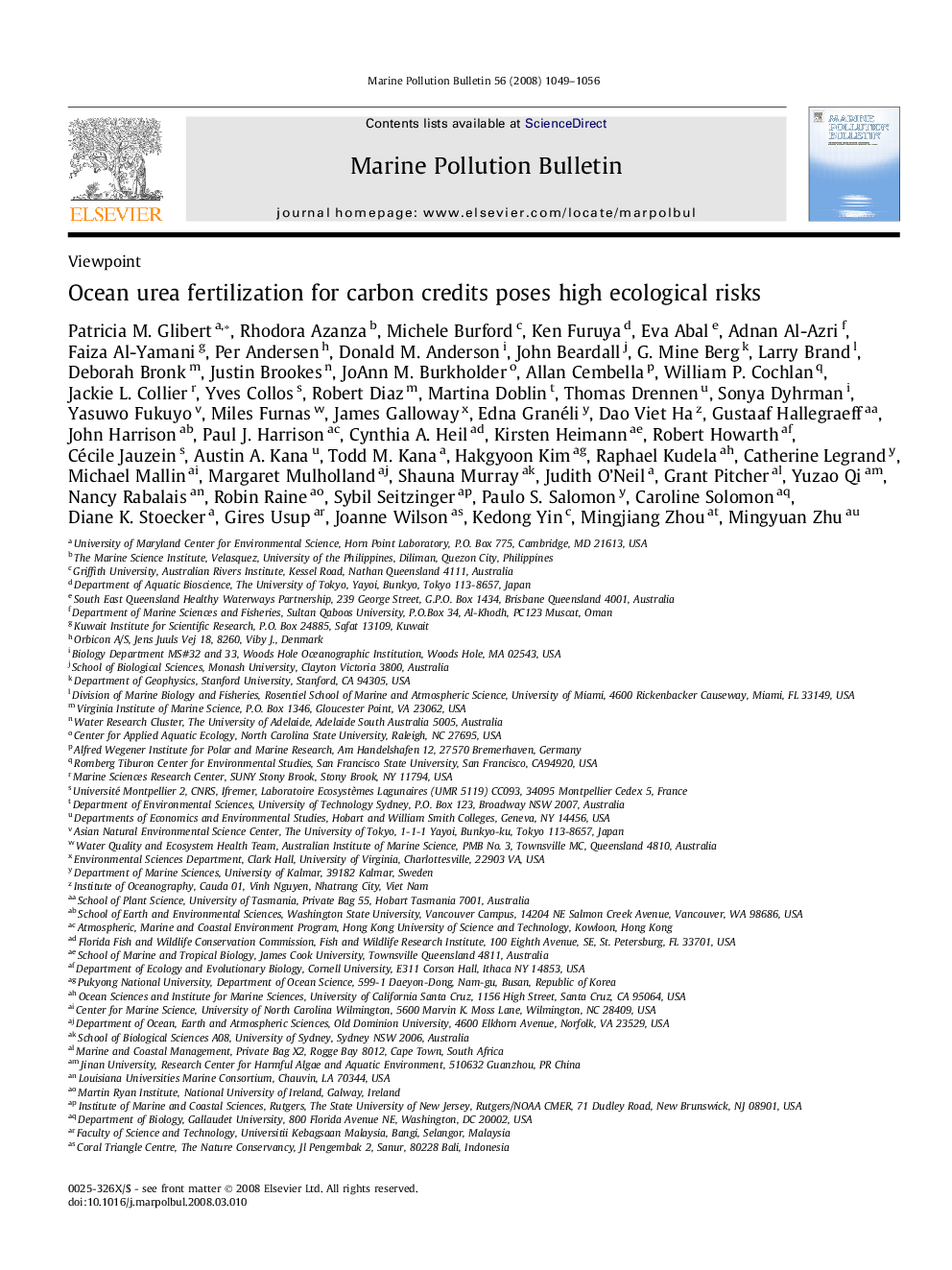| کد مقاله | کد نشریه | سال انتشار | مقاله انگلیسی | نسخه تمام متن |
|---|---|---|---|---|
| 4477609 | 1315730 | 2008 | 8 صفحه PDF | دانلود رایگان |

The proposed plan for enrichment of the Sulu Sea, Philippines, a region of rich marine biodiversity, with thousands of tonnes of urea in order to stimulate algal blooms and sequester carbon is flawed for multiple reasons. Urea is preferentially used as a nitrogen source by some cyanobacteria and dinoflagellates, many of which are neutrally or positively buoyant. Biological pumps to the deep sea are classically leaky, and the inefficient burial of new biomass makes the estimation of a net loss of carbon from the atmosphere questionable at best. The potential for growth of toxic dinoflagellates is also high, as many grow well on urea and some even increase their toxicity when grown on urea. Many toxic dinoflagellates form cysts which can settle to the sediment and germinate in subsequent years, forming new blooms even without further fertilization. If large-scale blooms do occur, it is likely that they will contribute to hypoxia in the bottom waters upon decomposition. Lastly, urea production requires fossil fuel usage, further limiting the potential for net carbon sequestration. The environmental and economic impacts are potentially great and need to be rigorously assessed.
Journal: Marine Pollution Bulletin - Volume 56, Issue 6, June 2008, Pages 1049–1056